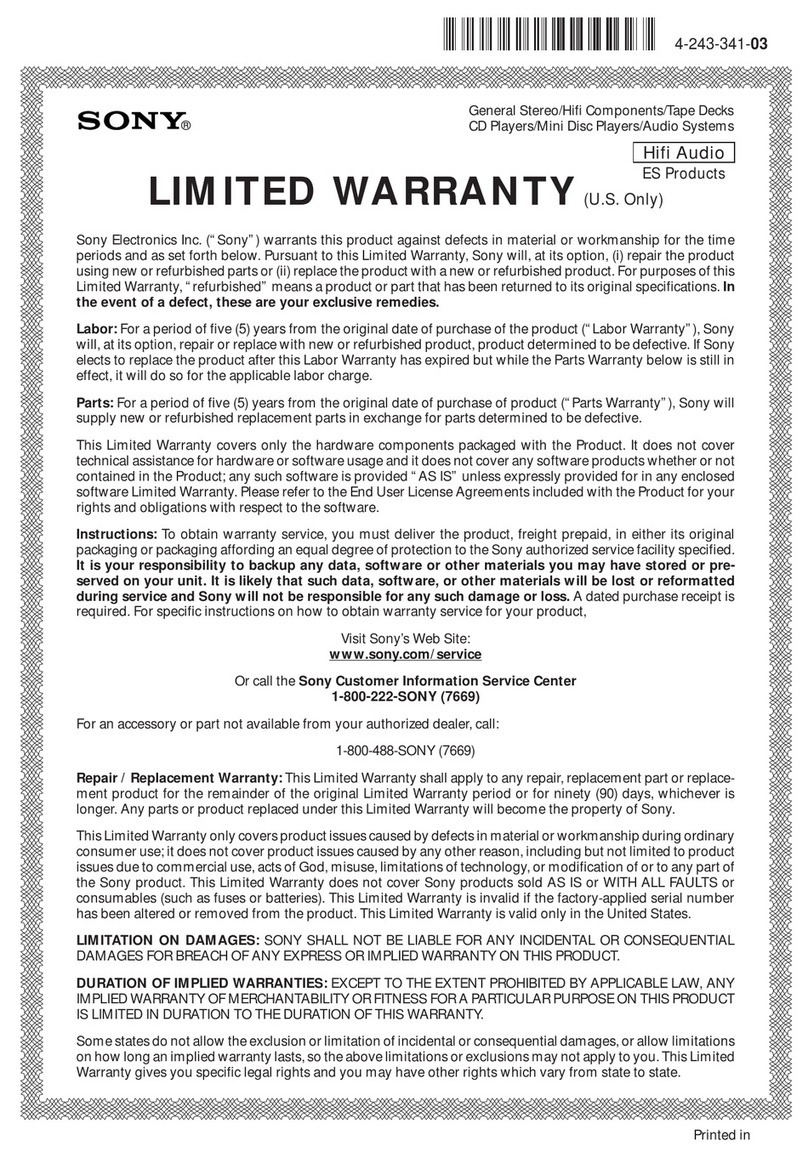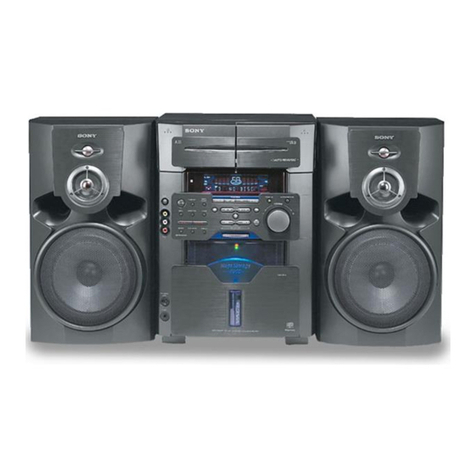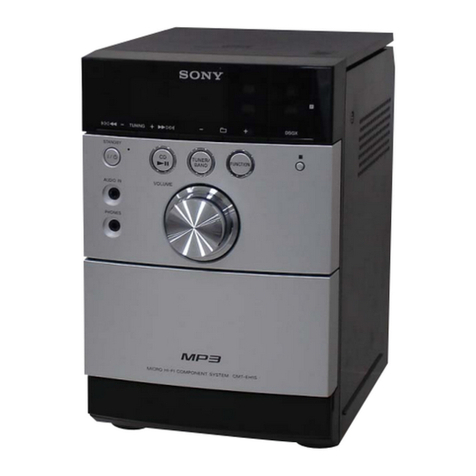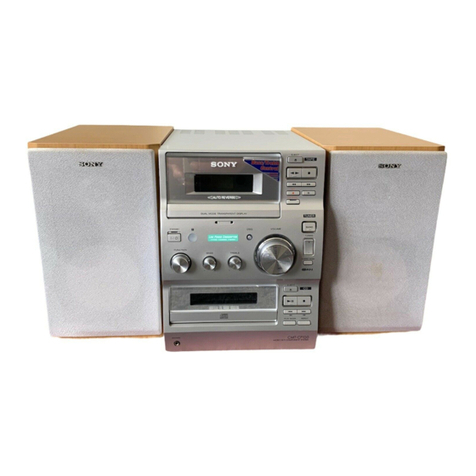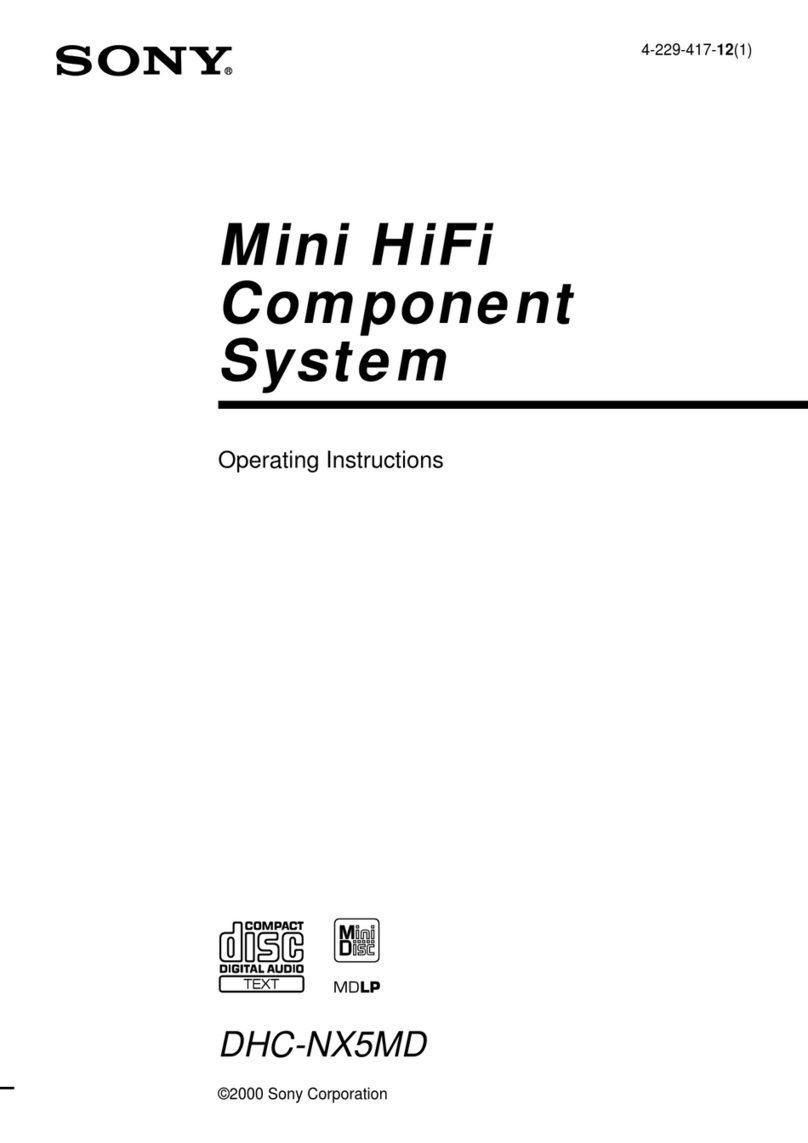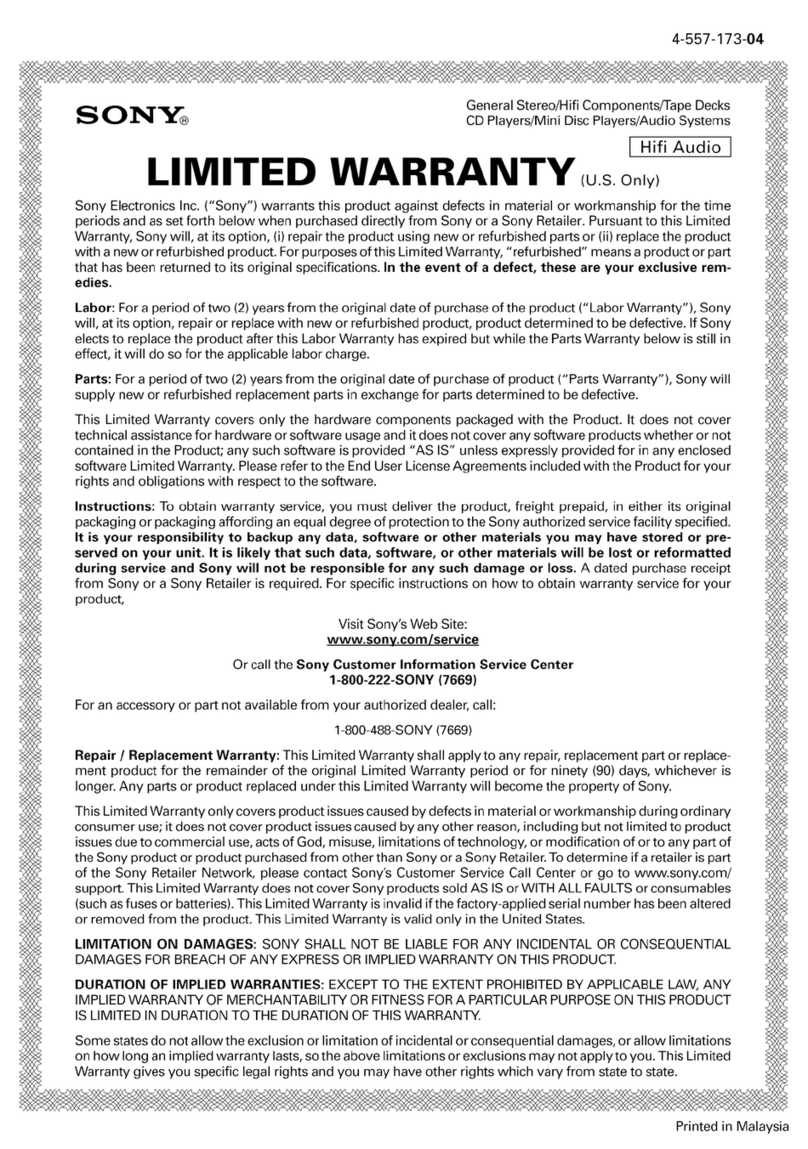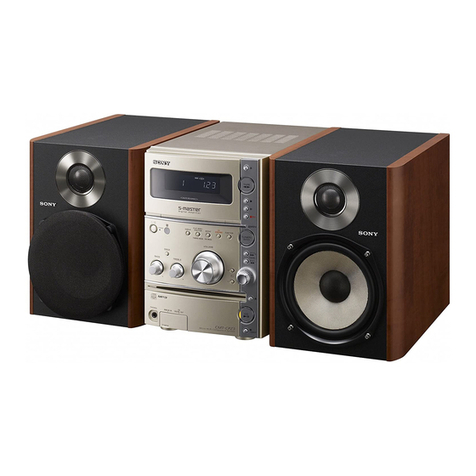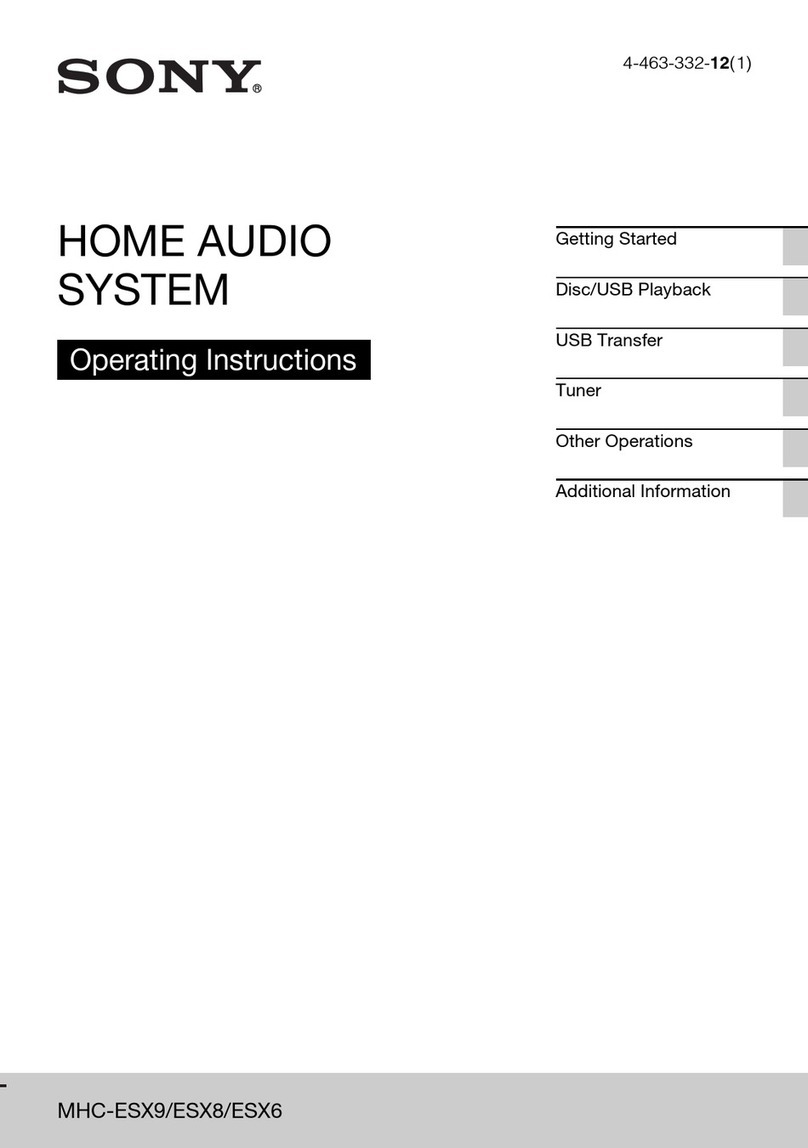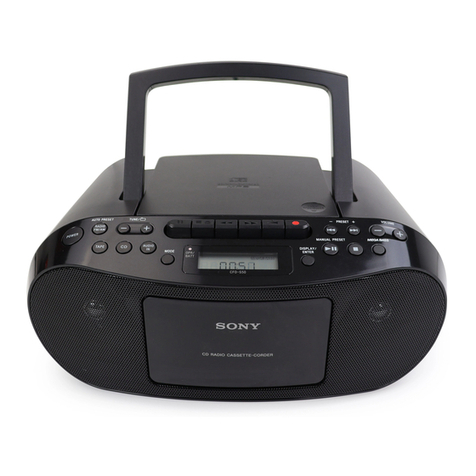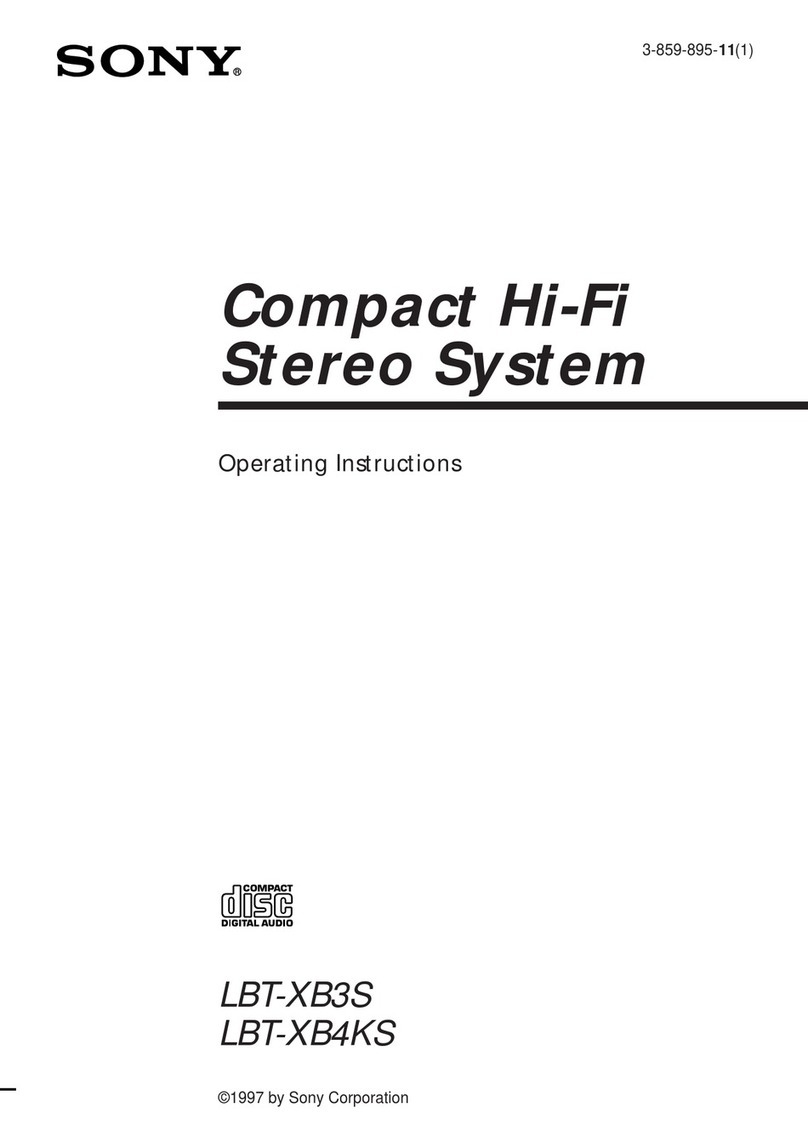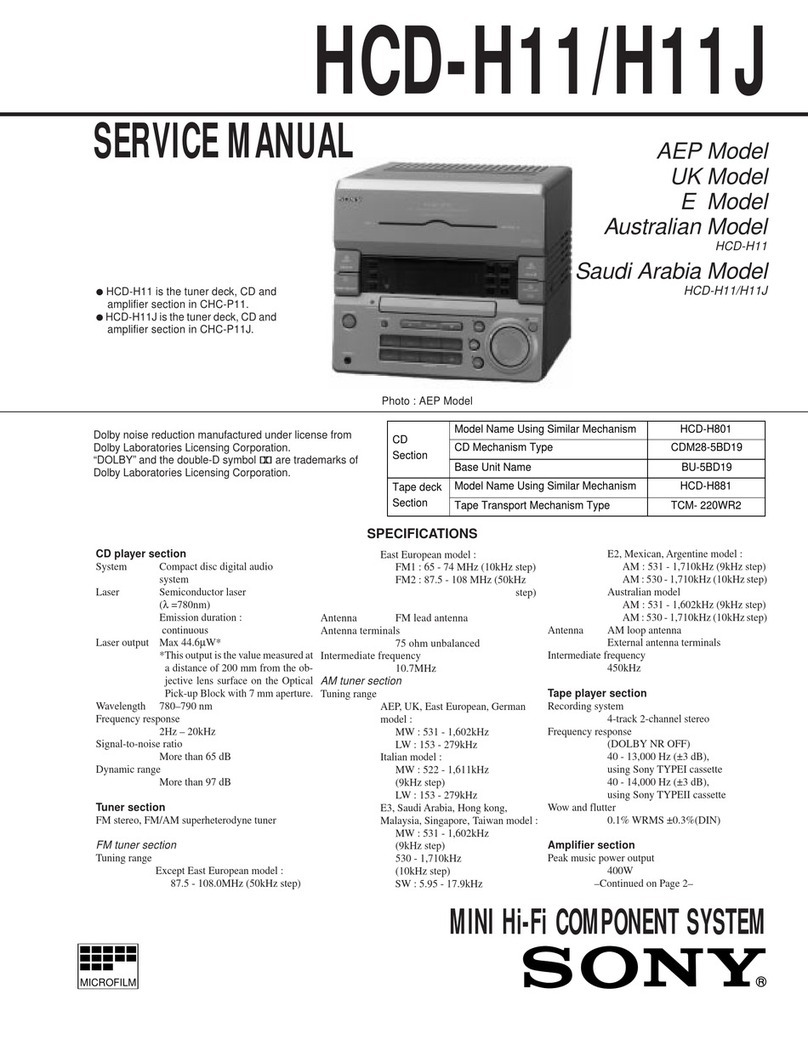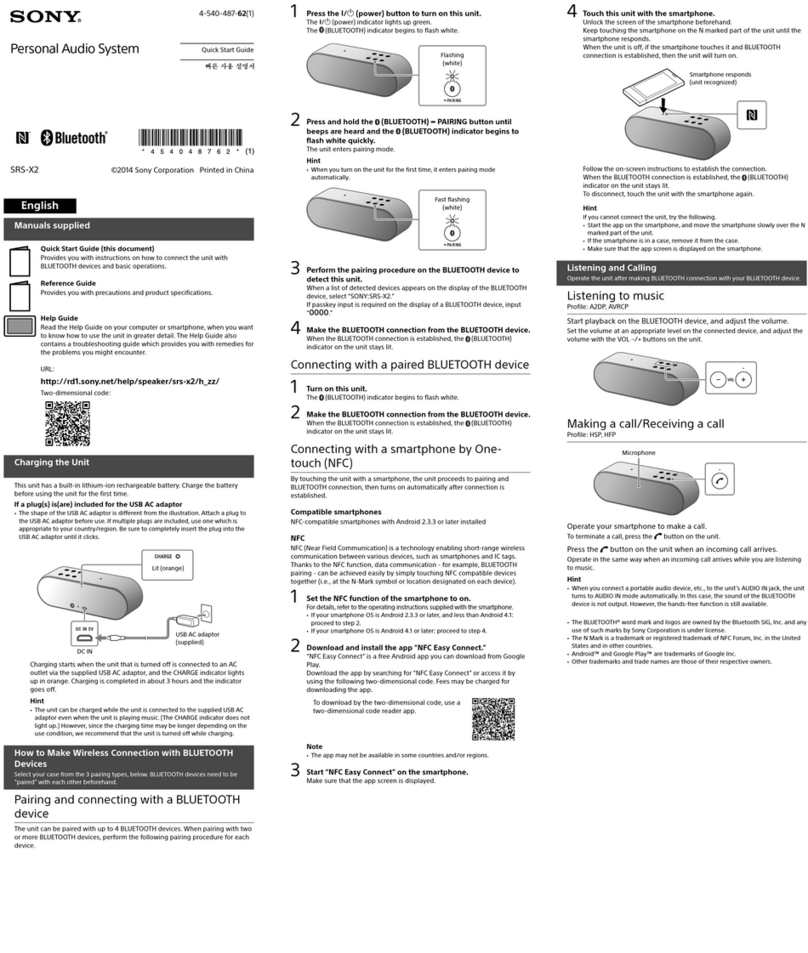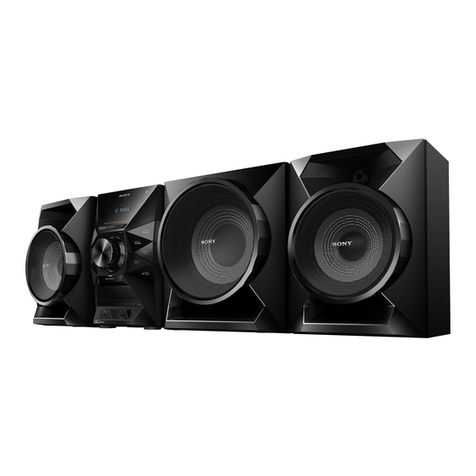HCD-SH2000
3
1. SERVICING NOTES ............................................. 4
2. DISASSEMBLY
2-1. Side Panel A, Side Panel B and Top Panel Section ........ 6
2-2. Back Panel Section ......................................................... 7
2-3. Front Panel Section ........................................................ 7
2-4. DMB21 Board................................................................. 8
2-5. CDM Section .................................................................. 8
2-6. CD MECHANISM DECK BLOCK (1) ......................... 9
2-7. CD MECHANISM DECK BLOCK (2) ......................... 9
2-8. DAMP Board, MAIN Board........................................... 10
2-9. SWITCHING REGULATOR ......................................... 10
3. TEST MODE ............................................................ 11
4. ELECTRICAL CHECK ......................................... 13
5. DIAGRAMS
5-1. Block Diagram - RS SERVO, USB Section -................. 15
5-2. Block Diagram - MAIN Section -................................... 16
5-3. Block Diagram - AMP Section -..................................... 17
5-4. Block Diagram - PANEL, POWER SUPPLY Section - . 18
5-5. Printed Wiring Board
- MAIN Board (Component Side) (Suffix 11) -.............. 20
5-6. Printed Wiring Board
- MAIN Board (Conductor Side) (Suffix 11) - ............... 21
5-7. Printed Wiring Board
- MAIN Board (Component Side) (Suffix 12) - ............. 22
5-8. Printed Wiring Board
- MAIN Board (Conductor Side) (Suffix 12) - ............... 23
5-9. Schematic Diagram - MAIN Board (1/4) (Suffix 11) -... 24
5-10. Schematic Diagram - MAIN Board (2/4) (Suffix 11) -... 25
5-11. Schematic Diagram - MAIN Board (3/4) (Suffix 11) -... 26
5-12. Schematic Diagram - MAIN Board (4/4) (Suffix 11) -... 27
5-13. Schematic Diagram - MAIN Board (1/4) (Suffix 12) - .. 28
5-14. Schematic Diagram - MAIN Board (2/4) (Suffix 12) - .. 29
5-15. Schematic Diagram - MAIN Board (3/4) (Suffix 12) - .. 30
5-16. Schematic Diagram - MAIN Board (4/4) (Suffix 12) - .. 31
5-17. Printed Wiring Board
- DMB21 Board (Component Side) - ............................ 32
5-18. Printed Wiring Board
- DMB21 Board (Conductor Side) - ............................... 33
5-19. Schematic Diagram - DMB21 Board (1/3) - .................. 34
5-20. Schematic Diagram - DMB21 Board (2/3) - .................. 35
5-21. Schematic Diagram - DMB21 Board (3/3) - .................. 36
5-22. Printed Wiring Boards
- DAMP Board (Component Side) - ............................... 37
5-23. Printed Wiring Boards
- DAMP Board (Conductor Side) -................................. 38
5-24. Schematic Diagram - DAMP Board (1/4) - .................... 39
5-25. Schematic Diagram - DAMP Board (2/4) - .................... 40
5-26. Schematic Diagram - DAMP Board (3/4) - .................... 41
5-27. Schematic Diagram - DAMP Board (4/4) - .................... 42
5-28. Printed Wiring Boards - DISPLAY Board - ................... 43
5-29. Schematic Diagram - DISPLAY Board -........................ 44
5-30. Printed Wiring Boards - VOLUME Board- .................... 45
5-31. Schematic Diagram - VOLUME Board - ....................... 46
5-32. Printed Wiring Boards - BUTTON, USB Board -.......... 47
5-33. Schematic Diagram - BUTTON, USB Board - .............. 48
5-34. Printed Wiring Boards - VOLUME LED,
BOTTON LED AND TUNER Board -........................... 49
TABLE OF CONTENTS
5-35. Schematic Diagram - VOLUME LED,
BOTTON LED AND TUNER Board -........................... 50
5-36. Printed Wiring Boards - AUDIO-IN Board - ................. 51
5-37. Schematic Diagram - AUDIO-IN Board -...................... 51
5-38. Printed Wiring Boards - MIC Board - ............................ 52
5-39. Schematic Diagram - MIC Board -................................. 52
6. EXPLODED VIEWS
6-1. Main Section ................................................................... 65
6-2. Front Panel Section (1) ................................................... 66
6-3. Back Panel Section ......................................................... 67
6-4. Chassis Section ............................................................... 68
6-5. CDM Section .................................................................. 69
7. ELECTRICAL PARTS LIST .............................. 70
